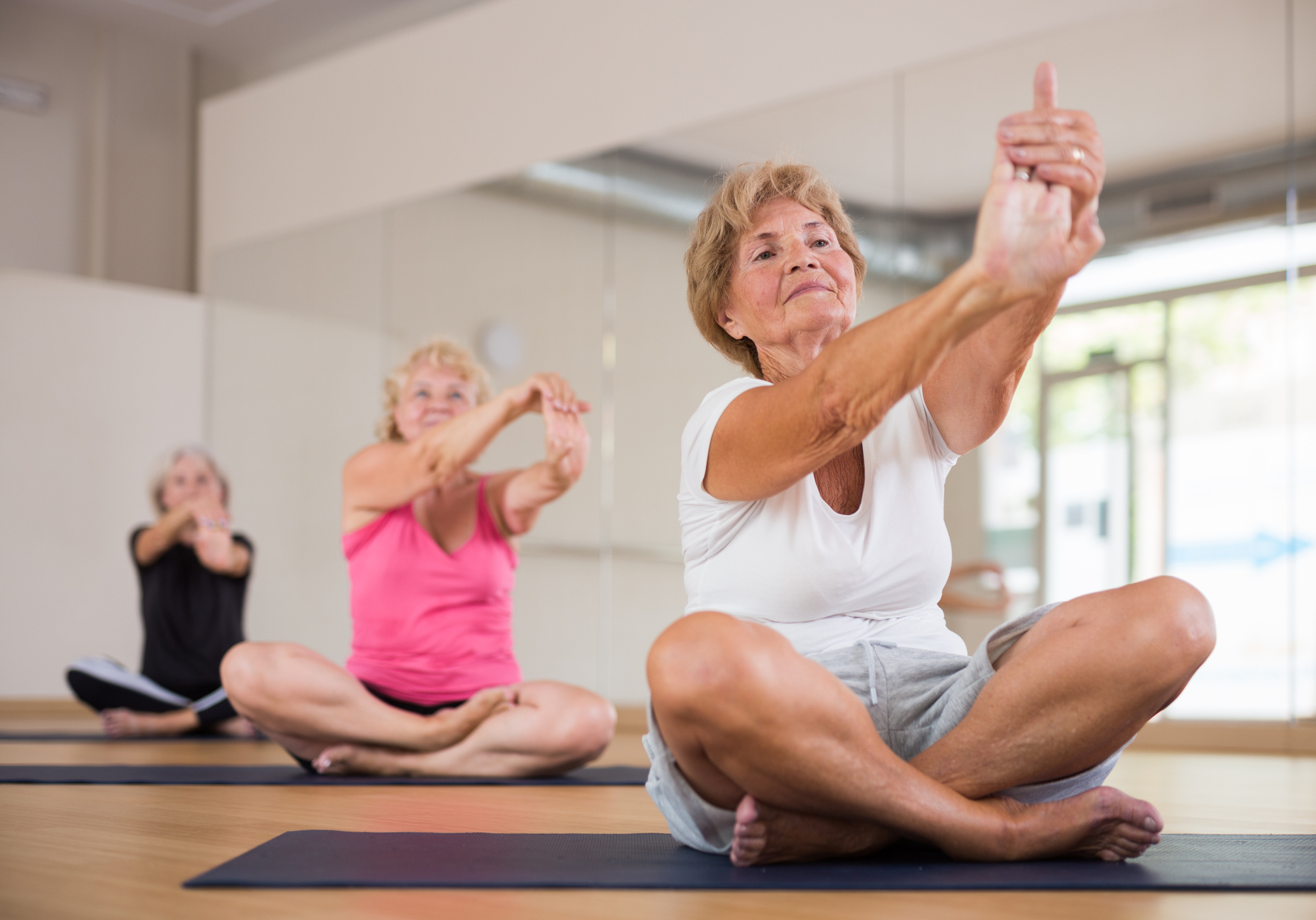After digging out following a snowstorm, or managing not to slip and fall on the ice, many older adults are grateful for their yoga habit that has helped keep muscles strong, joints limber, and balance intact. When done regularly, a gentle yoga practice helps loosen tight areas in the body, improve flexibility, and promote good posture while providing an opportunity to calm a busy mind – and it’s never too late in life to benefit from this holistic approach to movement.
According to a recent New York Times report, research suggests that it may be wise for older adults to incorporate a yoga practice into their exercise regime as they age; some studies even link yoga with an improvement in the metrics that track cellular aging. Yoga – known for its slow fluid movements, breath focus, and meditation component is also tied to positive changes in brain health.
For those just dipping a toe in the yoga pool, it’s important to find a class suited to your ability level. Look for a basic or gentle yoga class which will move at a slower pace with less intense poses. Chair yoga is offered by many studios and community centers as well. Restorative and Hatha yoga also focus on slow controlled movement, breath work and meditation.
In a well-designed yoga class for novices, a seasoned instructor will offer modifications for certain poses that may put too much strain on knees, hips, wrists, backs or necks. When attending a new class, be sure to discuss any physical limitations or issues with the teacher so they can offer adaptations that will prevent injury and increase enjoyment. New students may want to place their mat near a wall for assistance during balance poses, or use blocks, blankets or even a chair to make certain movements more accessible.
Because older adults naturally lose muscle mass with age, in addition to a regular yoga practice to promote greater range of motion and balance, seniors should also continue to include strength training in their regular exercise routine. Body weight and other strength-training exercises, including certain yoga poses, can also help improve bone density to combat osteoporosis.
Keep in mind that yoga poses should not be painful – some sensation should be expected but pushing beyond your edge can be harmful, and your limits may change from day to day based on activity, sleep quality or stress levels. If you feel pain in certain poses, back off and ask for a modification from the instructor. As with any new exercise program, talk first with your doctor and start off with shorter, less intense sessions. Making yoga a regular practice can not only improve physical well-being but the meditation and breathing components can also help seniors manage stress, boost mood and improve mental health while encouraging social interaction.






Add Your Voice
0 Comments
Join the Discussion